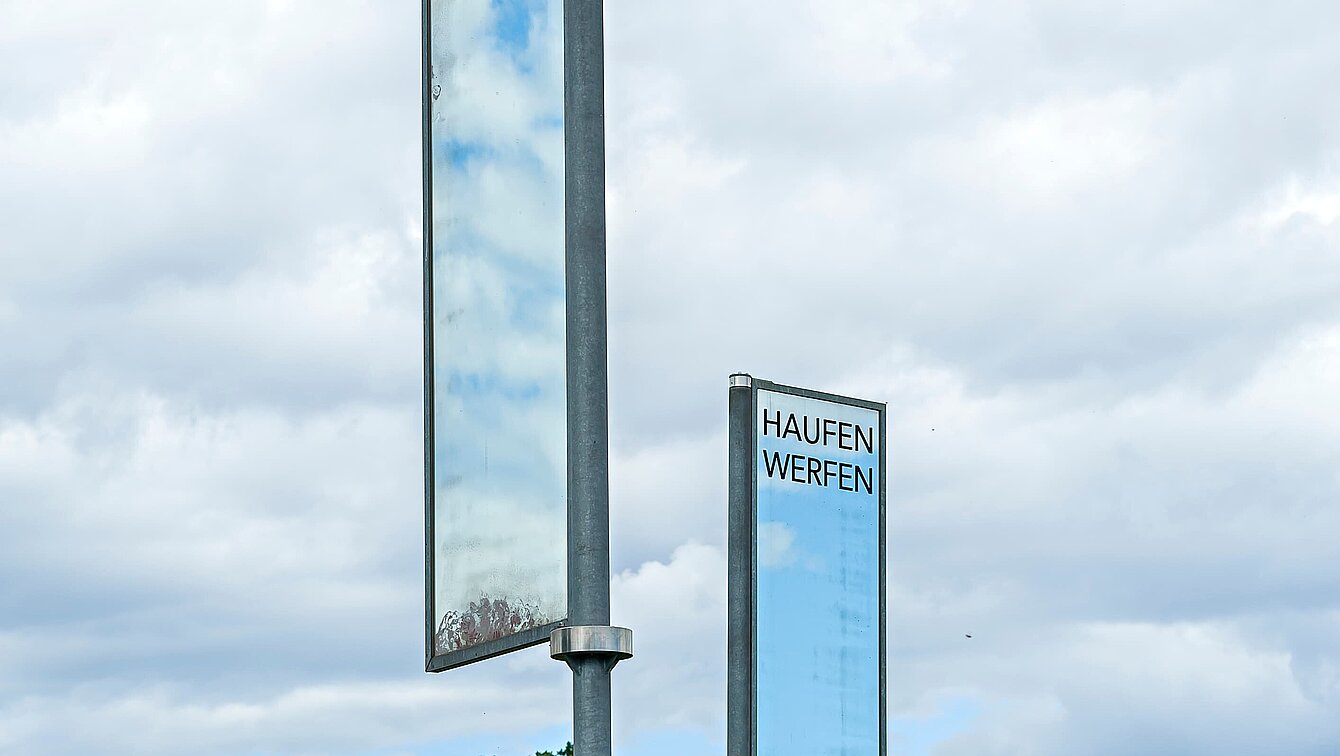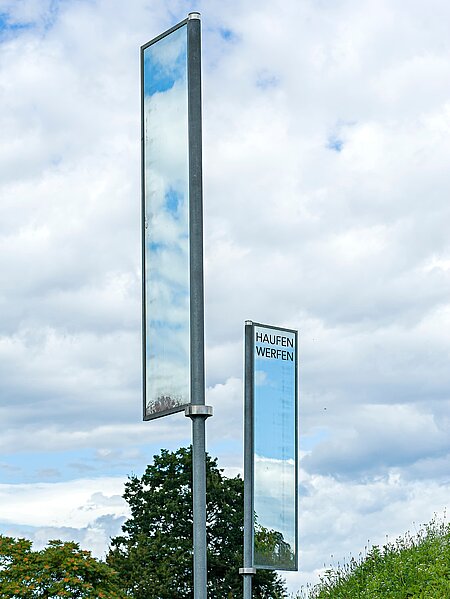On a hill, between two paths, stand two mirrors mounted on poles. They twist and turn in the wind all the time, meaning that what they reflect is constantly changing. These reflections symbolise a view into two different worlds. For the brief moments when the mirrors are reflected in each other, a connection is created between the two worlds. Pils’ dynamic work demonstrates that meanings are not fixed, but rather they are a changeable phenomenon. The texts developed with writer Ferdinand Schmatz are incisive formulations and yet similarly open in their meaning.
Zog den Helfer unterm Teppich hervor [Pulled forth the helper from under the carpet]
Tobias Pils, 2004


Image Credits
Author
Rainer Fuchs, Kurztext adaptiert von Lisa Schantl und Lukas Sperlich
Location on map
Position 49
Owner
Österreichischer Skulpturenpark Privatstiftung
Artist biography
Tobias Pils
Show all
About the sculpture
The sculpture by Tobias Pils consists of two poles with mirrors that were set up at a fork in the path, with words and sentences printed on one side of each mirror. The texts, only some of which refer to the specific location of the sculpture park, were developed in cooperation with writer Ferdinand Schmatz. The phrase “Haufen Werfen”, a pun on the several meanings of the word “Haufen” (heaps) in German, alludes to the artificially landscaped hills of the park, while the poetry of other sentences on the mirror represent free thought.
The title of the work “zog den helfer unterm teppich hervor“ also talks of semantic dynamics, of a tightrope walk between pithy words and their meanings, which remain open. The message that meanings are never fixed, but should rather be seen as phenomena that are open to change, is not only projected by the words on the mirrors, but also by the mirrors themselves, which keep twisting and turning in the wind. As the mirrors never reflect the same scene twice, their content changes permanently.
The two paths, the two mirrors and the two texts symbolise two worlds that refer to each other on a dialectic and also on a factual level whenever one mirror is reflected in the other. Pils’s approach is based on the assumption of a real path and a dream path, two components that differ from each other but still depend on one another for their respective definition.
This work interlinks openness and direction, freedom and norm. Although the mirrors keep turning and producing different reflections, their rotation is based on a precise construction, and the mirroring depends on the strict physical principles of reflecting light. That the mirror poles are also reminiscent of flagpoles, with the associated images of flags flying in the wind, but also of universally binding sign systems for national and ideological collectives and norms, adds yet another dimension to this structure of relational opposites.



















